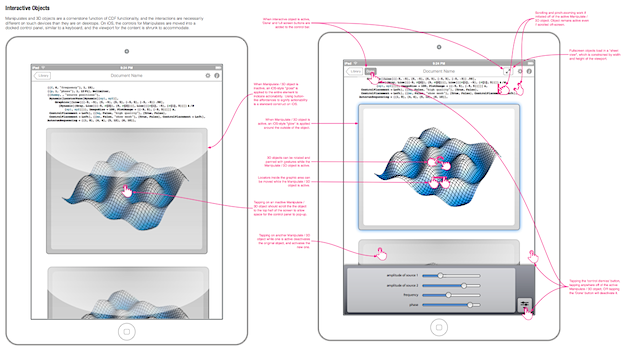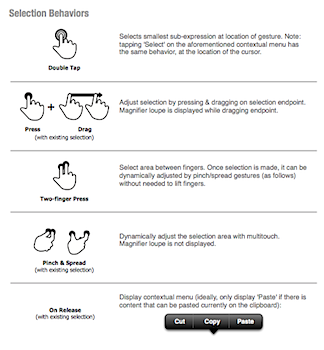When Wolfram introduced the Computable Document Format (CDF) in 2011, the next logical question was ‘when will we be able to use it on mobile devices?’ However, in addition to the substantial technical complexities with making CDF work on a mobile devices, there were a number of UX challenges which needed to be addressed.
Mathematica, the primary authoring environment for CDF, is a traditional desktop application. As such, many of the interactions that one can create are mouse-centric, and assume the availability of a desktop-sized resolution. Therefore, it was my task to reinvent the CDF to be touch-friendly, context-aware, and capable of being used at all screen sizes.
Through an iterative process with the format’s developers and graphic designers, I ultimately arrived at a solution which put the content first, enabled the ‘direct manipulation’ constructs that users have come to expect from a touch device, and scaled gracefully to fit different screen sizes.
 Download specification examples (1.3mb)
Download specification examples (1.3mb)
In another instance, I was tasked with ensuring that all appropriate iOS text editing constructs and our custom gesture-based inputs were supported in out custom mathematical input area. After a thorough review of the existing behaviors, I produced a gesture map ‘cheat sheet’ to help guide developers with implementation.
 Download specification examples (0.1mb)
Download specification examples (0.1mb)
Due to technical considerations, we’re still awaiting release of the first CDF-powered mobile app, but the ideas and concepts that I developed for these apps are being applied on a number of ongoing projects.
